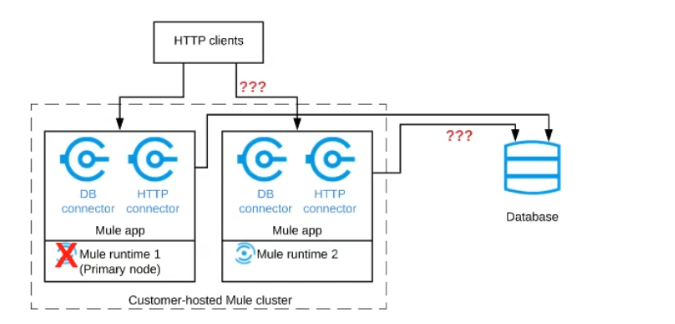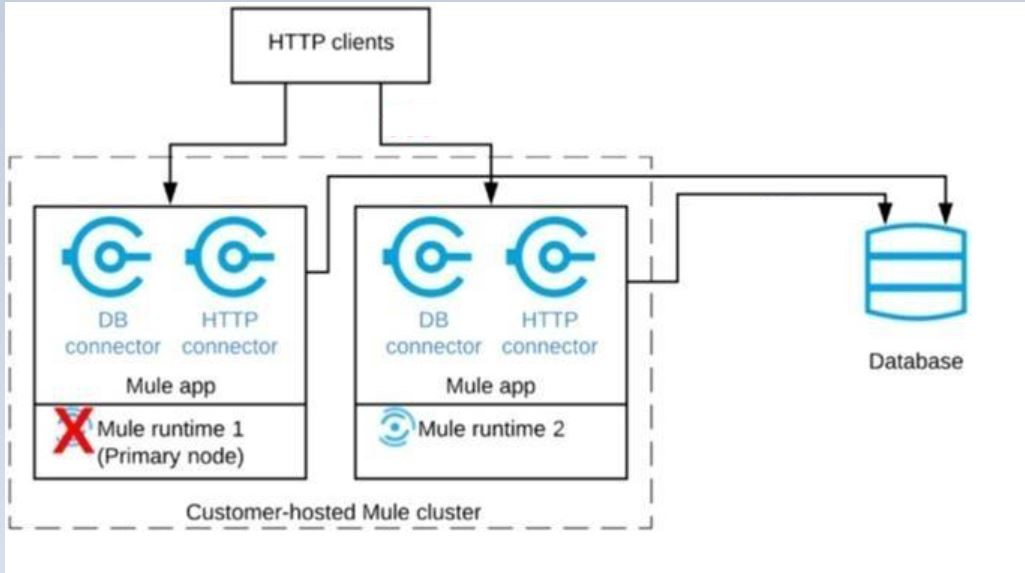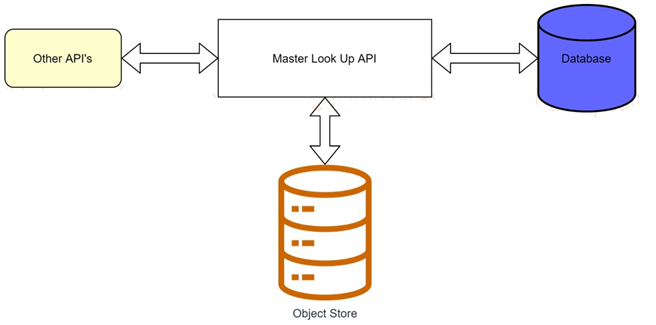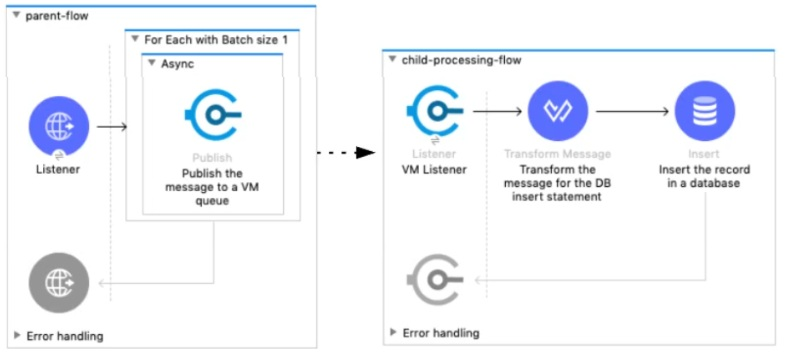MuleSoft MCIA-Level-1 MuleSoft Certified Integration Architect - Level 1 Exam Practice Test
A Kubernetes controller automatically adds another pod replica to the resource pool in response to increased application load.
Which scalability option is the controller implementing?
Answer : D
A mule application is being designed to perform product orchestration. The Mule application needs to join together the responses from an inventory API and a Product Sales History API with the least latency.
To minimize the overall latency. What is the most idiomatic (used for its intended purpose) design to call each API request in the Mule application?
Answer : B
Scatter-Gather sends a request message to multiple targets concurrently. It collects the responses from all routes, and aggregates them into a single message.
Refer to the exhibit.

A Mule application is deployed to a cluster of two customer-hosted Mute runtimes. The Mute application has a flow that polls a database and another flow with an HTTP Listener.
HTTP clients send HTTP requests directly to individual cluster nodes.
What happens to database polling and HTTP request handling in the time after the primary (master) node of the cluster has railed, but before that node is restarted?
Answer : A
Correct answer is Database polling continues Only HTTP requests sent to the remaining node continue to be accepted. : Architecture descripted in the question could be described as follows.When node 1 is down , DB polling will still continue via node 2 . Also requests which are coming directly to node 2 will also be accepted and processed in BAU fashion. Only thing that wont work is when requests are sent to Node 1 HTTP connector. The flaw with this architecture is HTTP clients are sending HTTP requests directly to individual cluster nodes. By default, clustering Mule runtime engines ensures high system availability. If a Mule runtime engine node becomes unavailable due to failure or planned downtime, another node in the cluster can assume the workload and continue to process existing events and messages

What is a defining characteristic of an integration-Platform-as-a-Service (iPaaS)?
Answer : A
A banking company is developing a new set of APIs for its online business. One of the critical API's is a master lookup API which is a system API. This master lookup API uses persistent object store. This API will be used by all other APIs to provide master lookup data.

Master lookup API is deployed on two cloudhub workers of 0.1 vCore each because there is a lot of master data to be cached. Master lookup data is stored as a key value pair. The cache gets refreshed if they key is not found in the cache.
Doing performance testing it was observed that the Master lookup API has a higher response time due to database queries execution to fetch the master lookup data.
Due to this performance issue, go-live of the online business is on hold which could cause potential financial loss to Bank.
As an integration architect, which of the below option you would suggest to resolve performance issue?
Answer : A
Refer to the exhibit.

A Mule 4 application has a parent flow that breaks up a JSON array payload into 200 separate items, then sends each item one at a time inside an Async scope to a VM queue.
A second flow to process orders has a VM Listener on the same VM queue. The rest of this flow processes each received item by writing the item to a database.
This Mule application is deployed to four CloudHub workers with persistent queues enabled.
What message processing guarantees are provided by the VM queue and the CloudHub workers, and how are VM messages routed among the CloudHub workers for each invocation of the parent flow under normal operating conditions where all the CloudHub workers remain online?
Answer : B
Correct answer is EACH item VM message is processed AT LEAST ONCE by ONE ARBITRARY CloudHub worker. Each of the four CloudHub workers can be expected to process some item VM messages In Cloudhub, each persistent VM queue is listened on by every CloudHub worker - But each message is read and processed at least once by only one CloudHub worker and the duplicate processing is possible - If the CloudHub worker fails , the message can be read by another worker to prevent loss of messages and this can lead to duplicate processing - By default , every CloudHub worker's VM Listener receives different messages from VM Queue Referenece: https://dzone.com/articles/deploying-mulesoft-application-on-1-worker-vs-mult
Mule application A receives a request Anypoint MQ message REQU with a payload containing a variable-length list of request objects. Application A uses the For Each scope to split the list into individual objects and sends each object as a message to an Anypoint MQ queue.
Service S listens on that queue, processes each message independently of all other messages, and sends a response message to a response queue.
Application A listens on that response queue and must in turn create and publish a response Anypoint MQ message RESP with a payload containing the list of responses sent by service S in the same order as the request objects originally sent in REQU.
Assume successful response messages are returned by service S for all request messages.
What is required so that application A can ensure that the length and order of the list of objects in RESP and REQU match, while at the same time maximizing message throughput?
Answer : D
Correct answer is Perform all communication involving service S synchronously from within the For Each scope, so objects in RESP are in the exact same order as request objects in REQU : Using Anypoint MQ, you can create two types of queues: Standard queue These queues don't guarantee a specific message order. Standard queues are the best fit for applications in which messages must be delivered quickly. FIFO (first in, first out) queue These queues ensure that your messages arrive in order. FIFO queues are the best fit for applications requiring strict message ordering and exactly-once delivery, but in which message delivery speed is of less importance Use of FIFO queue is no where in the option and also it decreased throughput. Similarly persistent object store is not the preferred solution approach when you maximizing message throughput. This rules out one of the options. Scatter Gather does not support ObjectStore. This rules out one of the options. Standard Anypoint MQ queues don't guarantee a specific message order hence using another for each block to collect response wont work as requirement here is to ensure the order. Hence considering all the above factors the feasible approach is Perform all communication involving service S synchronously from within the For Each scope, so objects in RESP are in the exact same order as request objects in REQU